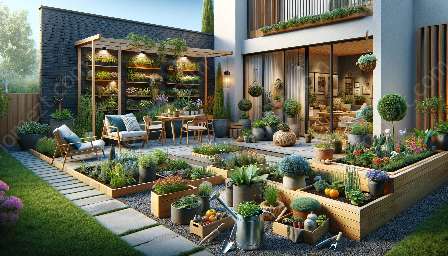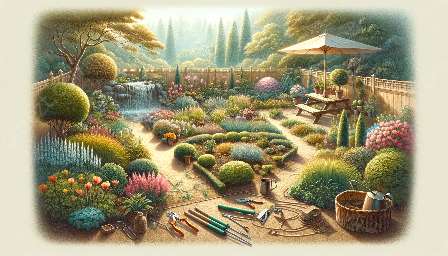Garden design is the art and process of creating plans for the layout and planting of gardens and landscapes. It involves considering the aesthetic, functional, and ecological aspects of outdoor spaces to create harmonious and attractive environments. A well-designed garden reflects the homeowner's style, enhances the property, and provides a space for relaxation and enjoyment.
When it comes to garden design, one must also consider pest management to ensure the health and vitality of the plants. Incorporating natural pest management techniques can help maintain a balanced and thriving ecosystem within the garden. Additionally, the garden design should seamlessly integrate with the yard and patio, creating a cohesive outdoor living space.
Design Principles and Elements
Garden design encompasses various principles and elements that contribute to the overall aesthetic and functionality of the outdoor space. Some key aspects include:
- Balance and symmetry
- Proportion and scale
- Unity and harmony
- Color, texture, and form
- Transition and focal points
Pest Management in Garden Design
Effective pest management is crucial for maintaining the health and beauty of the garden. Incorporating natural methods to control pests, such as companion planting, attracting beneficial insects, and using organic pesticides, can help minimize the impact of pests while preserving the garden's ecological balance.
Integration with Yard & Patio
The garden design should seamlessly integrate with the yard and patio, creating a cohesive outdoor living space. Considerations such as pathways, seating areas, and lighting play a crucial role in connecting the garden with the surrounding outdoor areas.
Plant Selection and Layout
The selection and arrangement of plants are fundamental aspects of garden design. Factors to consider include:
- Climate and soil conditions
- Plant diversity and biodiversity
- Seasonal interest and bloom times
- Functional zones (edible gardens, ornamental beds, etc.)
Sustainability and Eco-Friendly Practices
Embracing sustainable and eco-friendly practices is essential in modern garden design. This includes water-wise gardening, utilizing native plants, and minimizing chemical inputs to create an environmentally-responsible outdoor space.
Designing for Pest Management
Creating a garden that naturally deters pests involves:
- Companion planting to discourage pests
- Attracting beneficial insects to prey on pests
- Utilizing physical barriers and natural repellents
- Implementing proper garden hygiene and maintenance
Functional and Aesthetic Feature Integration
Integrating functional and aesthetic features, such as bird baths, bee hotels, and insect-friendly habitats, enhances the garden's biodiversity while contributing to its visual appeal.
Yard and Patio Harmony
Harmonizing the garden with the yard and patio involves:
- Creating smooth transitions between outdoor spaces
- Considering the use of materials and colors that complement each other
- Designing seating and entertainment areas that blend seamlessly with the garden
- Incorporating elements such as fire pits, water features, and outdoor lighting for ambiance
By integrating these aspects, the garden design becomes an integral part of the overall outdoor living experience.




